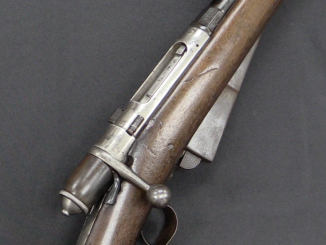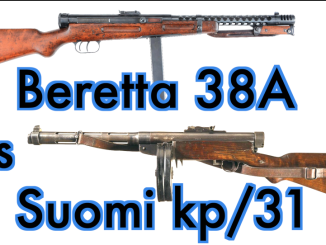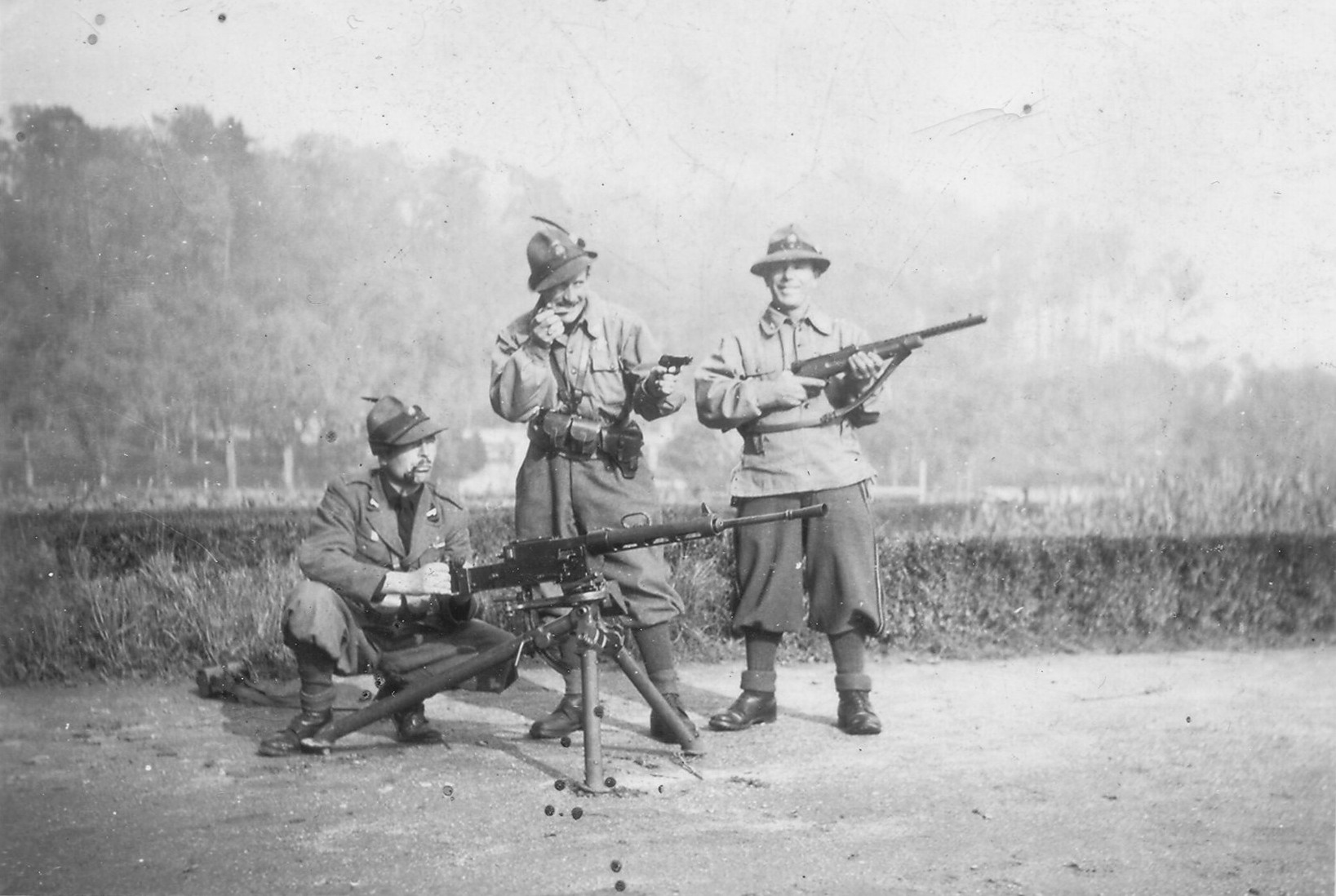Speaking about his time leading a group of Arab soldiers in Libya prior to his involvement in the LRDG:
We also obtained captured Italian machine guns: these weapons of a new design of extreme ingenuity, light, pleasant to handle and of a good appearance, had only one fault: they wouldn’t fire. I tested many: under the best of conditions, when spotlessly clean and oiled precisely to the right degree, they couldn’t be relied upon to fire more than a burst or two…
From Popski’s Private Army. Presumably he is talking about the Breda M30, although I would maybe take issue with the “good appearance” part…




Yep, yep,
a lot of beautys, like Bredas.
I like Breda mod.30.The ideal weapon for sterile chamber.
In figure reminiscent insect. I love it.
And at the other end of the spectrum was the 8mm Breda M1937 MMG ( some sources refer to it as an HMG, although its size, weight and specifications would normally classify it as the former ), which, in spite of the use of oiled cartridges and an esoteric 20-round strip-feed system, was still an extremely reliable and sturdy gun that earned a good operational record during the Second World War. Interesting to see two such contrasting designs come out of the same factory within less than a decade of each other.
It’s not the caliber or size that makes it the HMG – one has to take into consideration that not all people were created talking English and using Brit/American nomenclature 🙂
German nomenclature cought traction in most of the Continental Europe, whereas “heavy MG” (schweres Maschinengewehr in German, Tyazheloy Pulyemyot in Russian, Tezhky Kulomet in Czech, ciężki karabin maszynowy in Polish) is a rifle-caliber belt-fed weapon on a heavy mount as opposed to a bipod mounted belt-fed “light MG” (leichtes Maschinengewhr, Lyegkoy Pulyemyot, lehky kulomet, lekki karabin maszynowy), and with magazine-fed machine guns being called various names, like Muskete (German), Machine Rifle (Brit/US), ręczny karabin maszynowy (Polish) or Fusil Mitrailler (French). In this system the .50 would be called the superheavy MG (Uberschweres Maschinengewehr in German, najcięższy karabin maszynowy in Polish until 1945) or “big caliber MG” (Krupnokalibernyi Pulyemyot in Russian, wielkokalibrowy karabin maszynowy in Polish after 1945).
The other system is essentially used by Entente Cordiale, whereas the rifle-caliber belt-fed weapon on a mount is just a Mitrailleuse (French) or Machine Gun (UK), with no further qualificators. Then there’s an LMG, which in the English military parlance ever since WW1 encompasses both the Continental LMG (belt-fed) and Machine Rifle classes, whereas in French these are still separated into Mitrailleiuse Legere and Fusil-Mitrailleur. Still, the .50 would be a HMG in English/American parlance, and Mitrailleuse Lourde in French.
Cutting the long story short – the Breda 37 indeed IS both the MMG (to the Brits and Americans) and HMG to Continental Europeans (except French). It’s just a matter of classification under various systems.
Thanks for the very comprehensive information on type classifications, Leszek. I was aware of the multitude of differences in nomenclature and, by extension, type classifications, endemic to different countries and languistic syatems. Perhaps I should have clarified ahead of time that I was simply looking at the subject from the U.S. / British standpoint, since that is the system I have been used to. No offense intended :). Nevertheless, it was very interesting to learn of the complex regional and national variations covering the interpretation of what is considered a light, medium or heavy machine gun, or a machine rifle for that matter.
Sorry for the typographical error — Line 2 of my reply should have read “linguistic systems”.
Like Earl, I was familiar with the terminology different nations use, but perhaps unlike him, I hadn’t thought of it systematically, the way that Leszek presented it.
The US and UK were the only nations to use “submachine gun,” but the UK also used “machine carbine” for the Lanchester and Sten. The US was the leader in calling what we’d now call a PDW a “carbine,” but a couple of nations that built their own weapons chambered for the .30 Carbine cartridge followed suit. The rest of the world stuck to using the term for a shortened rifle, as had been done since sometime soon after firearms replaced pikes.
I read Earl’s comment, and didn’t catch the typo on “languistic”. Now that he’s called it to our attention, I keep thinking of something involving lobsters (langosta in many European lang… ling… ah, those crafty Europeans, they have a different word for everything).
Re: Popski’s comments. A lot of memoirs are good sources of first-hand knowledge. Some of them, though, are simply repeating what was the conventional wisdom among their peers or subordinates, and that’s as subject to confusion, myth and urban legend as, say, ARFCOM today. Peniakoff’s book was interesting; he struck me as a hands-on guy, unlike many of the British officers of his era, who left the technicalities to their NCOs and appear to have focused primarily on setting an example for the rankers. Perhaps because he was a “hostilities-only” officer and not a career soldier.
Hi, Kevin :
I read your post with great interest, and I really enjoyed the good-humored commentary. Now the thought of langouste or spiny lobster is making my stomach growl! Peniakoff was certainly quite a character and was not in the least bit afraid to adapt and innovate on the battlefield. Reminds me of the very pleasant and informative discussion we had sometime back about David Stirling, Paddy Mayne, Ralph Bagnold, et al., on FW. They all seem to share something in common — demonstrable hands-on leadership ( never asking their men to do what they would not do themselves ), the willingness to keep on learning and applying, a real sense of adventure, boldness, cold-blooded courage, an impatience with prevailing wisdom and the ability to act decisively and independently under pressure while still weighing up the odds. All characteristics that many ( but fortunately not all ) conventionally-minded superior officers abhorred.
I’m-a sorry. But Italy makes better guns now, yes? (Lol from Italy)
Italy has always made numerous excellent firearms, both past and present. The knowledgeable members of this website all know what they are, so I won’t get into the details. Like any other country, Italy has also had her share of less-than-satisfactory guns, the Breda M1930 LMG being one of them.
I do Cowboy Action shooting with a bevy of awesome Italian-made replicas… And while most of my fellow shooters appear to be big John Wayne fans, I’m more of a Sergio Leone “s’ghetti western” type of guy!
We’ve got Beretta making the Cx4 and ARX-100 for the U.S. market, and Uberti and Pedersoli as the only game in town for wild west and civil war replicas…
Why no Bodeo Model 1889 retreads or replicas from “the boot?!” Hmm?